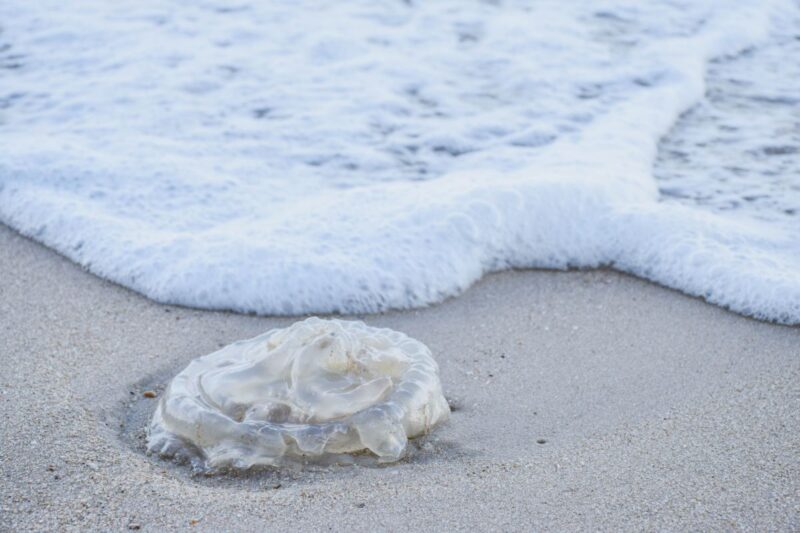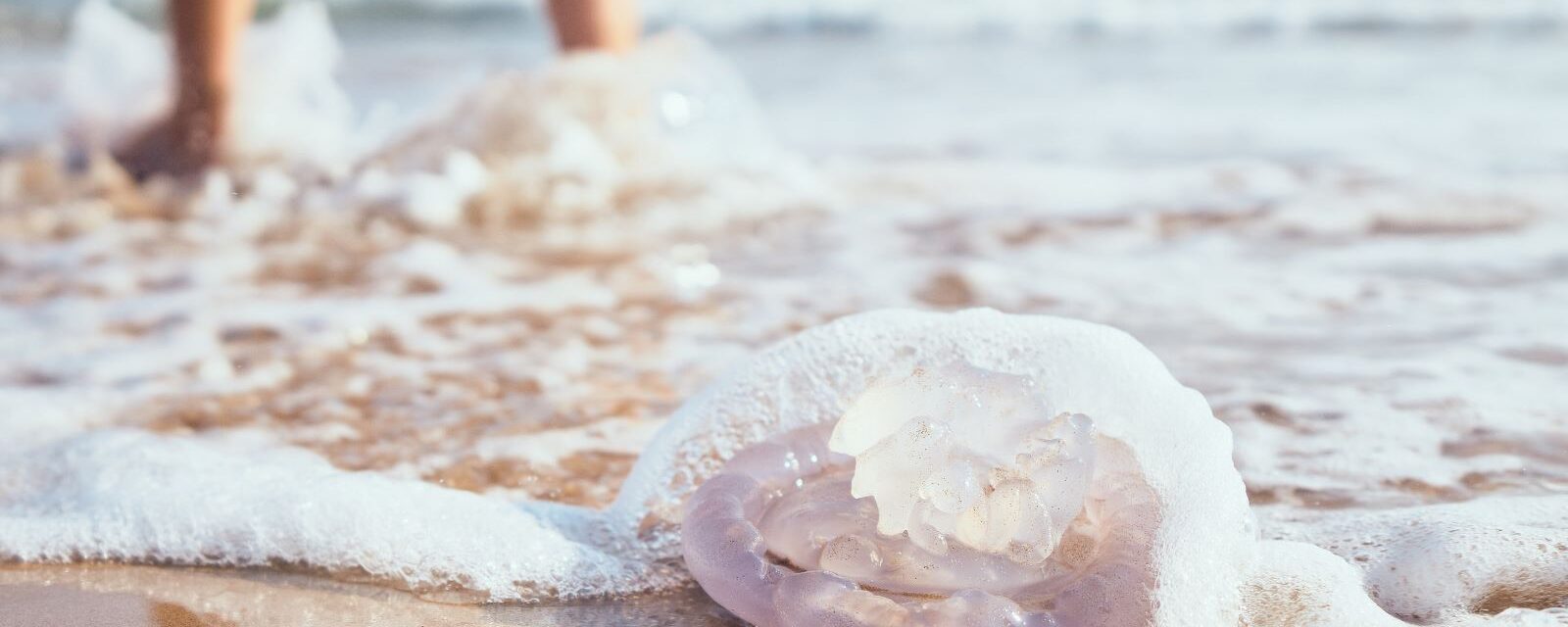Come on down to the beaches of Anna Maria Island, where the water glows blue, the sands are as white and soft as can be, and sea turtles can be found often nestled up in the brush at night.
It’s romantic for lovers in the evening and fun for families during the day. But what happens if something from the gulf pops out? What happens if you get stung by a jellyfish?
It can happen. Fortunately, we can help get you prepared with some tips for treatment, how long the sting lasts, and what to expect.
The Look of a Jellyfish Sting
So firstly, what does a jellyfish sting look like? In most instances, it doesn’t look like much at all. A jellyfish sting can cause a bit of swelling. The most likely visual cue is a deep red mark.
What is more important than the look is how painful it is. While the sting may look like little more than a mild rash, the sting can be rather painful. Tingling, numbness, and prolonged itching may occur.
How Long Will These Ailments Last?
So there is a process for getting over a jellyfish sting. Overall, how long do jellyfish stings last?
The answer can be a long time. Fortunately, the most intense pain is usually right after the initial sting. The throbbing pain may occur in the first few hours, with most of the more-serious pain dissuading after about two to three hours. Afterward, welts may appear. These could last anywhere from one week to three weeks depending on your skin sensitivity.
The redness may disappear, but it is not uncommon for the area to itch and be slightly red up to a month after the initial sting.

Basic Treatment
So you want to know how to treat a jellyfish sting? You may be thinking about the old wise tale. Some people believe that all you need to do is find someone to pee on the sting area and you are good to go!
This isn’t necessary. It isn’t even a particularly good form of treatment. Vinegar has the same basic functionality of cleaning the sting area without the mess. The area should be covered with vinegar to clear out any residual sting. If you find any tentacles still hanging from the surface area, they should be removed with gloves or some kind of quick and handy beach tool. The important thing is that you don’t touch the tentacles with your own hand (they may not be present).
Now you need to apply prolonged hot water to the area. A great method is to use a hot towel. Press it on the area for about 15 minutes. You should find that the initial intense sting is gone, followed by mild pain upon touch and redness.
In the following hours, days, and weeks, you can apply an ice pack to the surface. Some may use hydrocortisone cream and other over-the-counter creams for itching and swelling. Use as appropriate.
Plan Your Visit
Anna Maria Island is not known for its jellyfish populations. While they are out there in modest numbers, most are harmless. Stay at one of our vacation home rentals for families and enjoy the beach until your heart’s content. Review our list of Anna Maria Island vacation rentals today.
More Intense Methods of Treatment
If the stung area looks especially severe, call 911. Some jellyfish leave especially nasty stings and some individuals may simply have an allergic reaction. If the pain is constant and the area gets worse in a short period of time, you should take further action with a professional.
Jellyfish on Anna Maria Island
The majority of jellyfish stings are not emergencies. They can be treated with some simple and prompt basic care, like the application of hot water and some follow-up hydrocortisone cream. Furthermore, if you are wondering, do all jellyfish sting, they don’t. There are some, such as the Aurelia Aurita, that don’t have a harmful sting.
Jellyfish sitting on the beach can still sting. And while many are harmless and most cases are non-emergency, it is still best to keep away.







